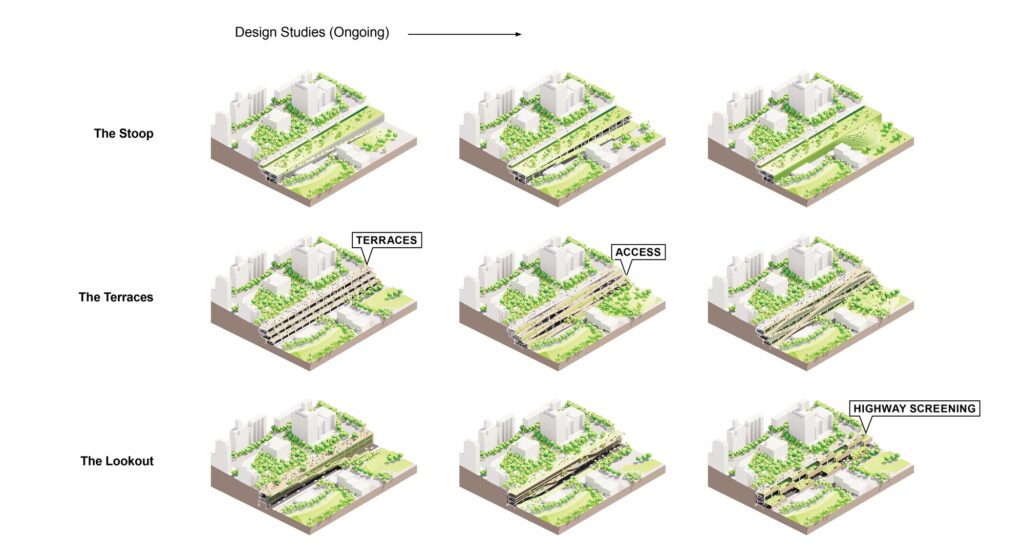DOT Unveils New BQE Conceptual Plans
Dec 20
Hundreds of people from Brooklyn Heights, Cobble Hill, DUMBO, Fulton Ferry, Vinegar Hill and Downtown Brooklyn participated in DOT-led workshops in early December to review preliminary design concepts for the Atlantic to Sands section of the BQE corridor. We want to THANK YOU for making time in your schedules at this very busy time of year to engage in this critical and complicated process. Turnout matters!
The BHA and our partners in the Coalition for the BQE Transformation (BQET) met with our elected officials before and after the workshops and we are grateful to Congress Member Nydia Velázquez, Congress Member-elect Dan Goldman, State Senator Andrew Gounardes, Assembly Member Jo Anne Simon and Council Member Lincoln Restler for releasing a strong statement last Friday.
We are entirely in agreement with their words:
The rebuilding of the BQE presents us with a once-in-a-generation opportunity to undo decades of environmental racism and community harm, protect our planet, and provide the 21st century infrastructure Brooklynites deserve. With the climate crisis upon us, we must explore options that ensure a just transition away from fossil fuels and greenhouse gasses.
We need to see a more forward-thinking option that re-imagines the entire BQE corridor for the health and well-being of New Yorkers and our planet.
It is also our consensus opinion that any solution must at least achieve two goals: 1) minimizing vehicular traffic to two lanes in each direction and 2) limiting negative impacts on air quality, noise and vibrations, such as maximizing the capping of the roadway.
We recognize that the triple cantilever is falling apart and we support efforts by the Adams’ administration to secure federal funding to address this critical need. Yet any proposal that takes us backward by expanding cars and trucks to three lanes would result in accommodating six million more vehicles annually on the BQE. That is at direct odds with our city and state’s environmental goals. We must encourage forward-thinking policies that consider Bus Rapid Transit and increase regional marine and rail freight movements to minimize long haul trucking on our roadways and bridges.
Finally, we urge the State to participate in this process of re-imagining the entire BQE corridor and address longstanding inequities. We look forward to continuing to work with our city, state, and federal agencies to ensure that the project is consistent with their respective climate change goals and responsive to the community’s concerns.
 Along with our partners in the BQET, we will use the coming weeks to better understand the implications of DOT’s current design concepts and provide more detailed feedback. At the same time, we urge the city to respond to the call for additional plans that would truly showcase New York City’s leadership on sustainable, forward-facing infrastructure.
Along with our partners in the BQET, we will use the coming weeks to better understand the implications of DOT’s current design concepts and provide more detailed feedback. At the same time, we urge the city to respond to the call for additional plans that would truly showcase New York City’s leadership on sustainable, forward-facing infrastructure.
We encourage you to stay involved! Take the new BQE Central online survey and keep track of upcoming meetings on the BQE website. The next round of public workshops are scheduled for February 28th and March 2nd, 2023.
Finally, there has been extensive media coverage. Read the Brooklyn Eagle’s coverage. The Brian Leher Show on WNYC, Brownstoner, Streetsblog and ABC TV and have also covered the story.




